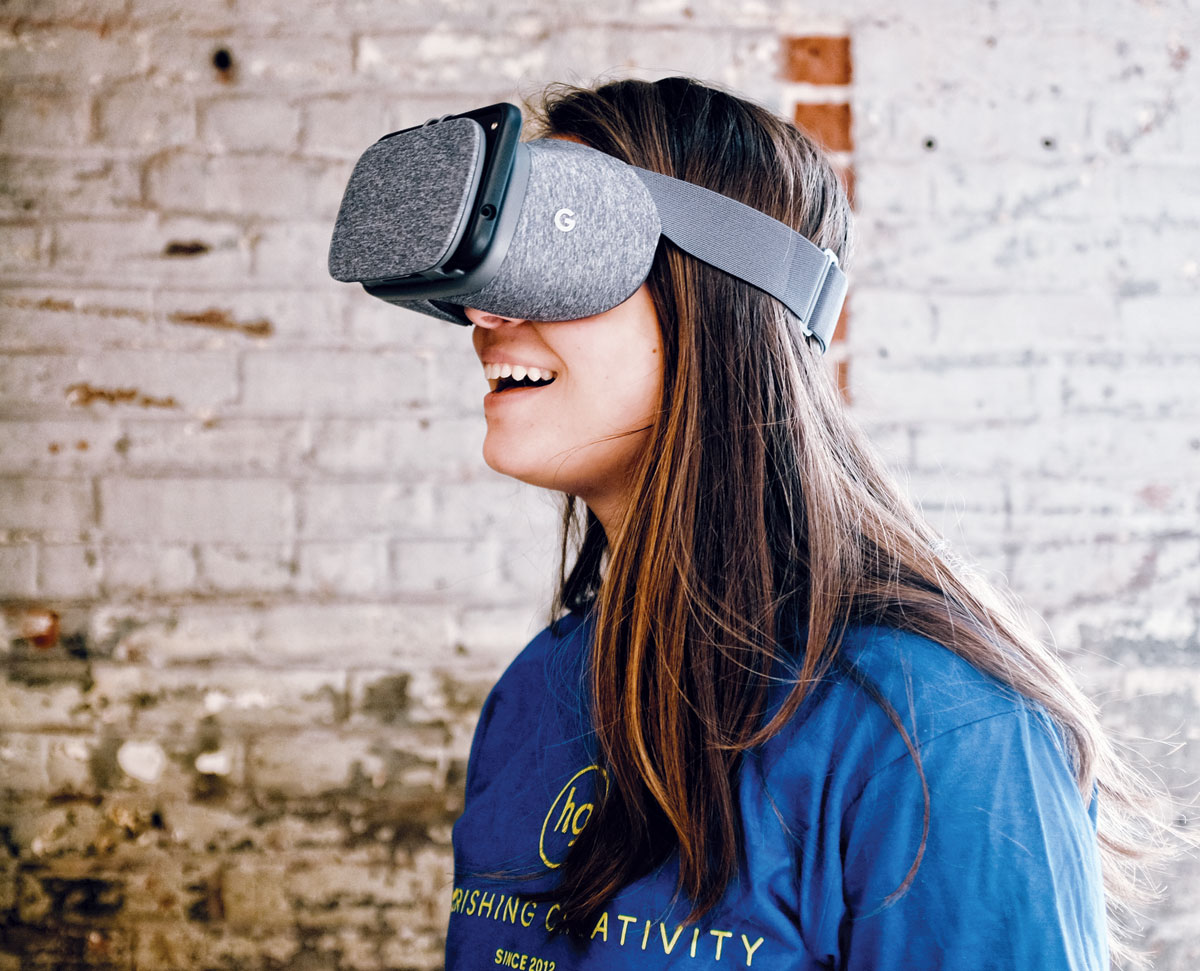From gamified food-safety training and virtually fried chicken to getting inside the coffee-making process, virtual and augmented reality have only just begun to tap their functional and entertainment capacity in the vast realm of food and drink.
Augmented-reality (AR) technology integrates digital data into real-time experiences (such as score overlays on telecasted sports games), while virtual reality (VR) creates computer-generated simulations of three-dimensional environments. As equipment costs decrease, more accessible experiences beyond the worlds of gaming and film are gaining traction. Even the 2018 Winter Olympic Games in Pyeongchang, South Korea, offered 50 hours of live VR coverage.
But what about the limited-service industry?
Virtual onboarding
Justin Rosenberg, founder and CEO of fast-casual chain Honeygrow, was one of a million-odd print New York Times subscribers who received a free set of Google Cardboard VR goggles with his Sunday paper in 2015, when the stalwart publication debuted its first-ever VR content. Inspired by such an accessible use of the technology, he huddled with chief brand officer Jen Denis to figure out how to incorporate it at Honeygrow.
“We’ve always been drawn to techy stuff; the restaurant had kiosks from the beginning,” Denis says. “The idea of accessible VR—something you can use that you don’t have to go into a laser-tag room to use—was really interesting to us.”
Honeygrow enlisted Philadelphia-based experiential art shop Klip Collective to create a five-part VR orientation and training tool for new employees. Donning VR headsets, new hires progress virtually through Honeygrow’s five “engine points,” from food safety to good customer service. Parts are gamified to make learning more effective, such as a food-safety game in which employees choose the correct shelf on which to place vegetables and raw meats.
“We feel people will retain information much better if they’re able to engage and interact in a meaningful way,” Denis says. “This generation has grown up with video, gaming, and technology. More and more, we learn by doing rather than reading.”
Not only has the tool improved consistency in training across locations, but it also helps free up busy managers who would otherwise be leading the sessions. Furthermore, it’s resulted in some notable cost savings. When the team was interviewing managers for its first Chicago locations, it brought the VR tool rather than pay to fly candidates into Philadelphia.
The brand is working on a 2.0 tool for existing employees—tackling such areas as ingredient origins and storytelling—with a goal of having VR as a component of every training milestone. “It’s so easy to geek out over this stuff, but it has to be useful, too,” Denis says. “It’s all about making the guest experience better.”
Consumer escape (room)
It’s hard to deny the “geek-out” appeal of applying VR at the consumer-facing level, which is already being tested by big beverage brands. Patrón tequila’s VR viewer takes consumers on a virtual tour of its distillery. Dos Equis put Facebook’s Oculus Rift headsets in bars to immerse customers in the virtual world of its mascot, The Most Interesting Man in the World.
KFC initially rolled out VR last year as an interactive training platform for employees and franchisees to supplement the multi-step Chicken Mastery Certification, which includes detailed e-learning and hands-on training at every location. This past December, the brand made the experience available to consumers for free to download on Oculus Rift.
Dubbed “The Hard Way,” the quirky simulation is presented as an escape room with mini games and surprises detailing the five steps of the chicken-frying process, all controlled by a meticulous, animated Colonel Sanders. KFC enlisted Portland, Oregon–based emerging tech group Wieden + Kennedy Lodge to make the game both educational and wryly entertaining.
“We shared … just how meticulous the colonel was about his chicken, and so the idea of a secret training kitchen where the colonel wouldn’t let you leave until you made his chicken the right way—the hard way—quickly rose to the top,” says director of advertising George Felix.
Felix declined to say whether KFC has any additional VR experiences in the works, but noted that the brand has made technology a central piece of its marketing efforts.
Education on consumers’ terms
Coffee giant Starbucks opted to use AR as a means to make its new Shanghai Reserve Roastery more interactive, via a digital tour-guide app. Upon entry, consumers are prompted to download the app or scan various QR codes throughout the space. When they point their phones at key features, information bubbles to life like a digital guide.
For example, the two-story copper roasting cask displays an animated version of newly roasted beans whisked through copper pipes to the coffee bars.
“With AR, we are able to go beyond educating, enabling, and engaging to empowering our customers to experience the space on their own terms,” says Marianne Duong, head of public affairs and communications for Starbucks Asia-Pacific.
She says the Shanghai location was selected both because of its massive scale and because its AR experience—created in partnership with Alibaba Holding Group—is “an extension of a technology the Chinese customer is already comfortable with.”
Though the app has been widely accepted by Roastery visitors, Duong wouldn’t say whether the brand will roll out similar augmented experiences at its stateside Roasteries, noting that each is regionally specific in how it approaches new technology. “It’s all about experiencing the coffee story in a new way,” she says.







